Produced By LEMAT WORKS
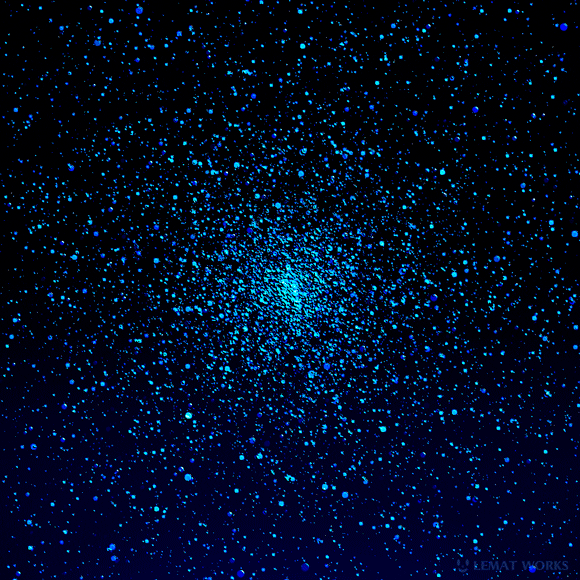
Produced by LEMAT WORKS
✨ Chill Space1 2 3 / Twinkle Night2 3 13 / Neon Space3 / Portfolio ✨
More Posts from Epic-flight and Others

David A. Hardy
Chaos theory, the principles underpinning certain nonlinear equations, also requires us to adopt a probabilistic description of many natural phenomena. The sizes and orbital positions of the planets in our solar system, for example, depend sensitively on the starting condition for solar system formation. If we ran the creation experiment again with slightly different parameters, we would get a different collection of planets with different orbital characteristics. But the results are not purely random. If we produced thousands of solar systems, again with similar but not exactly the same starting conditions, we would obtain a well-defined distribution of planet properties and planetary orbits. Although we cannot make exact predictions for any particular experiment, in principle we can determine the odds of getting any one type of planet or solar system. This intricate interplay between chance and determinism occurs throughout our physical universe and can even be applied to the consideration of how, and in what form, life can evolve.
Fred Adams, ‘Origins Of Existence: How Life Emerged In The Universe’ (2002)

(via sagansense)

Welcome planet Mercury in a 1970 illustration by David A. Hardy for Vision of Tomorrow. (AstroArt)

Design graphics Geya Shvecova (Smoky_MOON_171219)

Iapetus, moon of Saturn, observed by the Cassini probe on September 10, 2007, from a distance of about 73,000 kilometers.

Space shuttle re-entry.

Danny Flynn

Rick Sternbach, 1976
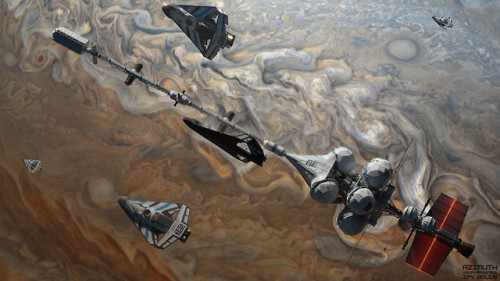
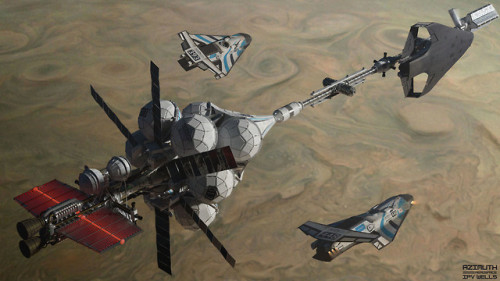
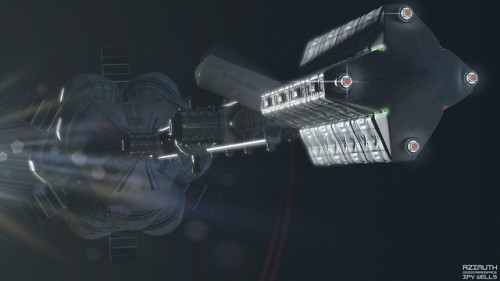

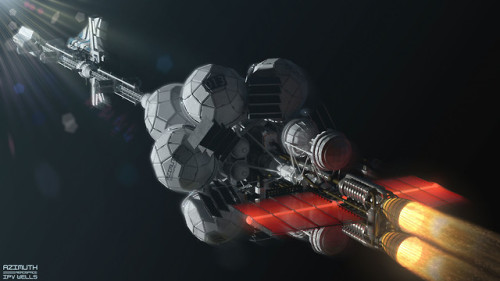
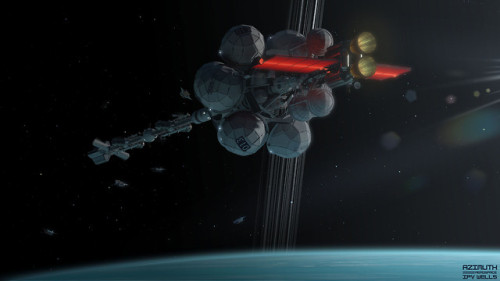

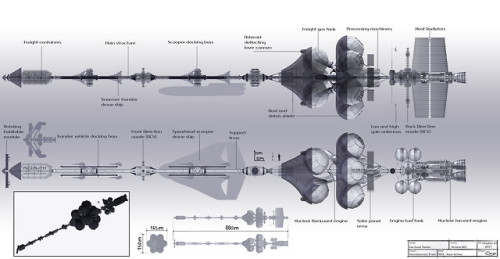
Wells-class interplanetary vehicle - Sergio Botero
“By the dawn of the XXII century, humanity’s thirst for Deuterium and Anti-Deuterium became so immense that companies began harvesting raw Hydrogen from the gas and ice giant planets. For that purpose, thousands of interplanetary spaceship tankers that work as refineries were built in order to transport the collected gas from the atmospheres of those planets to space stations over Earth, the Moon and other locations in the Solar System.“

“Intruder Weather” by Lou Drendel. The first squadron to fly the A-6 Intruder in combat was VA-75, in 1965. This is the A-6A of Lt Don Boecker on a typical all-weather mission.
-
 marynorton2250 liked this · 2 months ago
marynorton2250 liked this · 2 months ago -
 elevandofrecuencia reblogged this · 7 months ago
elevandofrecuencia reblogged this · 7 months ago -
 thatwitchrevan reblogged this · 1 year ago
thatwitchrevan reblogged this · 1 year ago -
 dire-wolf-pup reblogged this · 1 year ago
dire-wolf-pup reblogged this · 1 year ago -
 castiellover77 liked this · 1 year ago
castiellover77 liked this · 1 year ago -
 lesleybailey liked this · 1 year ago
lesleybailey liked this · 1 year ago -
 sigelfire reblogged this · 1 year ago
sigelfire reblogged this · 1 year ago -
 sigelfire liked this · 1 year ago
sigelfire liked this · 1 year ago -
 compose-myself liked this · 1 year ago
compose-myself liked this · 1 year ago -
 skkunkkk liked this · 1 year ago
skkunkkk liked this · 1 year ago -
 sadsquishi liked this · 1 year ago
sadsquishi liked this · 1 year ago -
 anarchy-penguin liked this · 1 year ago
anarchy-penguin liked this · 1 year ago -
 nyctophilic-rose liked this · 1 year ago
nyctophilic-rose liked this · 1 year ago -
 sea-cupid liked this · 1 year ago
sea-cupid liked this · 1 year ago -
 winterdotnet liked this · 1 year ago
winterdotnet liked this · 1 year ago -
 theodorebasmanov liked this · 1 year ago
theodorebasmanov liked this · 1 year ago -
 ssspace-cactusss liked this · 1 year ago
ssspace-cactusss liked this · 1 year ago -
 parisjackscn liked this · 1 year ago
parisjackscn liked this · 1 year ago -
 sensoryserenity reblogged this · 1 year ago
sensoryserenity reblogged this · 1 year ago -
 tenigam liked this · 1 year ago
tenigam liked this · 1 year ago -
 thebewitchingbloodredrosegarden reblogged this · 1 year ago
thebewitchingbloodredrosegarden reblogged this · 1 year ago -
 thebewitchingbloodredrosegarden liked this · 1 year ago
thebewitchingbloodredrosegarden liked this · 1 year ago -
 wormwoodpilled liked this · 2 years ago
wormwoodpilled liked this · 2 years ago -
 thedoll333 liked this · 2 years ago
thedoll333 liked this · 2 years ago -
 exploding-stars-emporium reblogged this · 2 years ago
exploding-stars-emporium reblogged this · 2 years ago -
 thewanderingcotabus reblogged this · 2 years ago
thewanderingcotabus reblogged this · 2 years ago -
 shybarbarianvoid liked this · 2 years ago
shybarbarianvoid liked this · 2 years ago -
 jazzyjesse liked this · 2 years ago
jazzyjesse liked this · 2 years ago -
 ringofkees reblogged this · 2 years ago
ringofkees reblogged this · 2 years ago -
 tor39-sex-62vech liked this · 2 years ago
tor39-sex-62vech liked this · 2 years ago -
 oldvision reblogged this · 2 years ago
oldvision reblogged this · 2 years ago -
 daimesonhosparabrincar reblogged this · 2 years ago
daimesonhosparabrincar reblogged this · 2 years ago -
 daimesonhosparabrincar liked this · 2 years ago
daimesonhosparabrincar liked this · 2 years ago -
 thewanderingcotabus liked this · 3 years ago
thewanderingcotabus liked this · 3 years ago -
 swimmingfish99 reblogged this · 3 years ago
swimmingfish99 reblogged this · 3 years ago -
 swimmingfish99 liked this · 3 years ago
swimmingfish99 liked this · 3 years ago -
 pleaselovemeliketrust reblogged this · 3 years ago
pleaselovemeliketrust reblogged this · 3 years ago -
 sadwithoutmusicwords liked this · 4 years ago
sadwithoutmusicwords liked this · 4 years ago
